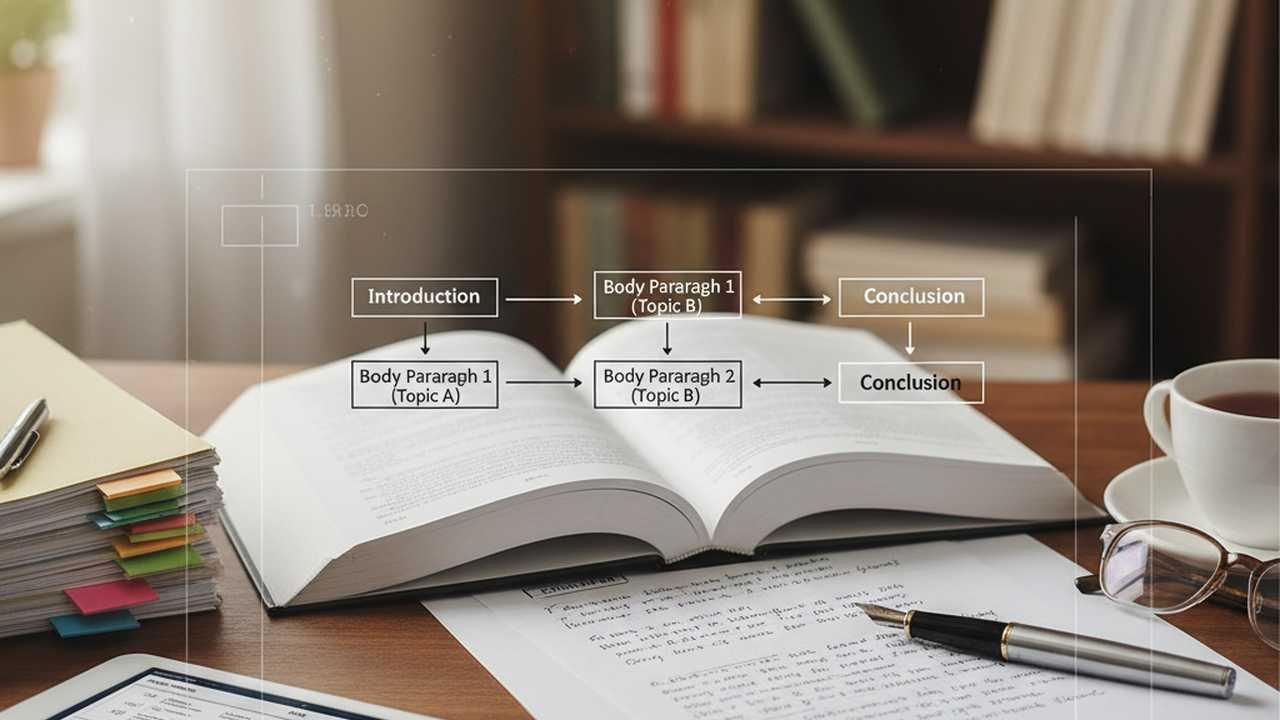Understanding the Urgency of Structuring Your Essay Right
In the high-stakes world of academia, every essay you submit is a reflection of your intellectual rigor and your ability to communicate complex ideas clearly. Failing to structure your work effectively can not only diminish its impact but also compromise your chances of excelling, particularly for those vying for educational leadership positions. Imagine pouring hours of research, analysis, and creativity into an essay only to have it lost in a sea of chaotic paragraphs and disconnected thoughts. This is why mastering the art of essay structure is not merely an academic exercise – it’s an urgent necessity. Clear structuring guides your readers through your argument effortlessly, allowing them to engage with your ideas without cognitive friction. Visualize your essay as a map: each section, each paragraph, each sentence should act as a signpost, illuminating the path of your argument. When structured correctly, your essay doesn’t just inform – it captivates, persuades, and leaves a lasting impression. For anyone aspiring to educational leadership positions, demonstrating this level of clarity and foresight signals both intellectual and professional competence, giving you an undeniable edge.
Crafting a Compelling Introduction That Hooks Instantly
The opening of your essay is the doorway through which your readers enter your world of ideas. A compelling introduction must do more than introduce the topic; it must grip the reader’s attention and communicate urgency. For students targeting educational leadership positions, your introduction serves as a subtle showcase of strategic thinking, demonstrating that you understand not only the subject matter but also the art of persuasive communication. Consider starting with a striking statistic, a provocative question, or a vivid scenario that immerses the reader in the issue at hand. For example, picture a school teetering on the brink of organizational chaos, where leadership decisions are made daily without clarity or foresight. Now, imagine your essay as the guiding blueprint that offers coherent solutions. By setting this scene, you create a sensory experience, engaging readers’ imaginations and emotions simultaneously. The key is to ensure the introduction not only informs but also generates a sense of urgency – prompting readers to continue, aware that the insights contained within your essay are indispensable for understanding the complexities of educational leadership positions.
Building Logical and Coherent Body Paragraphs
The body of your essay is the engine that drives your argument forward, and its structure dictates how smoothly your ideas flow. Each paragraph should function as a self-contained unit, anchored by a clear topic sentence that signals the focus while maintaining a natural connection to preceding paragraphs. For those aiming at educational leadership positions, demonstrating mastery in organizing arguments with logical progression conveys both analytical rigor and professional acumen. For instance, you might start a paragraph examining challenges in school policy, followed by one highlighting innovative strategies that address those challenges, culminating in a paragraph analyzing measurable outcomes. Incorporating vivid examples and real-world case studies enhances readability and engagement, making abstract concepts tangible. Imagine describing a school district where disjointed policies caused measurable declines in student achievement, then transitioning to a leader’s intervention strategy that reversed the trend, supported by verifiable data and community testimonials. These immersive narratives keep readers invested, ensuring your essay not only communicates facts but also resonates on a human, experiential level.
Mastering Transitions to Maintain Flow and Cohesion
Even the most compelling arguments can falter if they lack seamless transitions. Transitions are the connective tissue that ensures your essay reads as a continuous, cohesive narrative rather than a series of disconnected points. For applicants eyeing educational leadership positions, skillful transitions demonstrate your capacity to weave complex information into a clear, strategic framework – an essential skill in leadership contexts. Use transitional phrases that highlight relationships between ideas, such as cause and effect, comparison, or contrast. For example, moving from a discussion on administrative challenges to the impact of leadership decisions, you might write, “Building upon the challenges previously outlined, the implementation of targeted leadership interventions showcases measurable improvements.” By crafting transitions that are both informative and fluid, you guide the reader effortlessly through your argument, maintaining momentum and preventing cognitive fatigue. This deliberate flow not only enhances readability but also subtly reinforces your credibility as a thinker capable of navigating complex organizational landscapes.
Strategically Placing Evidence and Supporting Details
Evidence is the backbone of persuasive academic writing, and its placement within your essay can dramatically influence readability and impact. For candidates pursuing educational leadership positions, integrating robust, verifiable evidence conveys authority, reliability, and professional insight. Instead of listing data haphazardly, strategically place evidence to reinforce key arguments, ensuring each piece serves a purpose. Visualize your paragraphs as layered narratives: the opening sentence presents an idea, the next sentences provide supporting evidence, and the closing sentence synthesizes the information, linking it back to the overarching argument. For instance, citing a peer-reviewed study on leadership efficacy in public schools followed by real-world examples of principals who implemented similar strategies creates a compelling, multi-dimensional argument. Incorporating evidence with vivid, descriptive context allows readers to not only understand your points intellectually but also feel their tangible significance. This combination of rigor and narrative immersion enhances readability while reinforcing your credibility, positioning you as a knowledgeable contender for high-level educational roles.
Utilizing Clear and Varied Sentence Structures
Sentence structure profoundly affects how readers process and retain information. Repetitive, monotonous sentences can render even the most insightful analysis dull, whereas varied, rhythmically engaging sentences maintain attention and emphasize key points. For those targeting educational leadership positions, demonstrating mastery of linguistic nuance signals both intellectual versatility and effective communication skills – qualities indispensable in leadership. Begin sentences with different constructions, mix lengths strategically, and employ strong, action-oriented verbs to create a sense of immediacy. For example, instead of writing, “Leaders need to address student performance issues,” try, “Confronting declining student performance head-on, visionary leaders implement data-driven strategies that transform outcomes.” The variation not only draws readers in but also conveys a sense of urgency, compelling them to engage deeply with your analysis. By consciously shaping sentence structures, your essay achieves a dynamic, readable flow that mirrors the strategic agility expected in educational leadership positions.
Crafting Persuasive Conclusions That Resonate
The conclusion is your final opportunity to leave a lasting impression, and it must do more than summarize – it must resonate, persuade, and inspire action. For aspiring educational leadership positions, your conclusion serves as a microcosm of your professional philosophy, demonstrating the clarity and decisiveness that define effective leaders. Avoid generic statements; instead, synthesize your main arguments while reinforcing their real-world implications. Paint a vivid scenario of the future, showing how implementing the strategies discussed could transform educational institutions, improve student outcomes, and enhance organizational efficiency. For example, imagine a school once plagued by administrative inefficiency, now thriving under evidence-based leadership interventions – your essay has guided readers through this transformation, leaving them with a clear sense of the stakes and the rewards. Ending with a call-to-action, encouraging readers to apply these principles or engage further with your research, enhances urgency and positions your work as both insightful and actionable.
Incorporating Credible Sources to Enhance Authority
Trust is paramount in academic writing, and sourcing information from reputable, verified channels amplifies both the credibility and readability of your essay. For individuals pursuing educational leadership positions, referencing well-established research, industry reports, and authoritative case studies conveys a mastery of evidence-based practice. Utilize sources with transparent methodologies, verified licensing, and responsive support systems to strengthen your arguments. For instance, citing studies published in peer-reviewed educational journals or reports from government education departments provides an immediate layer of legitimacy. Complement these with real-world examples, such as testimonies from experienced school leaders or documented case studies, to ground abstract concepts in tangible reality. By weaving authoritative sources into your narrative seamlessly, you enhance both EEAT (Expertise, Authoritativeness, and Trustworthiness) and reader engagement, ensuring that your essay is not only informative but also compelling and persuasive.
Designing Visual Cues and Formatting for Readability
Though often overlooked, visual readability dramatically affects the flow and perception of your essay. Proper paragraph breaks, clear headings, and strategic emphasis guide the reader’s eye and make dense content accessible. For aspirants to educational leadership positions, meticulous formatting signals attention to detail, organizational skill, and an understanding of reader psychology – all qualities critical in leadership roles. Use bold text judiciously to highlight key concepts, and ensure that paragraphs are uniform in length, visually balanced, and easy to scan. A well-structured visual layout reduces cognitive load, allowing readers to focus on the substance of your argument. Imagine a reader scanning your essay for critical insights: strategic formatting ensures they encounter your key points quickly, understand your reasoning effortlessly, and feel compelled to engage deeply with your work. When combined with compelling content and authoritative evidence, this visual clarity reinforces your essay’s persuasive power and enhances your appeal as a candidate for leadership roles.
Final Call to Action: Elevate Your Academic and Professional Standing
Now is the moment to seize the competitive edge. Every element of your essay – from the opening hook to the final sentence – must communicate urgency, authority, and clarity. Aspiring for educational leadership positions demands more than competence; it requires the ability to craft persuasive narratives that influence, inspire, and inform. Take action today by implementing the strategies outlined above: structure your arguments meticulously, integrate vivid examples, cite authoritative sources, and employ dynamic sentence structures that maintain reader engagement. Your essay is not just a submission; it is a reflection of your professional potential, a tangible demonstration of your readiness to lead, innovate, and drive meaningful change. Don’t let disorganization, weak transitions, or unclear evidence dilute your impact. Transform your writing into a compelling showcase of expertise and strategic insight, positioning yourself decisively for coveted leadership opportunities. Act now, refine your essays, and step confidently toward the professional future you envision.


